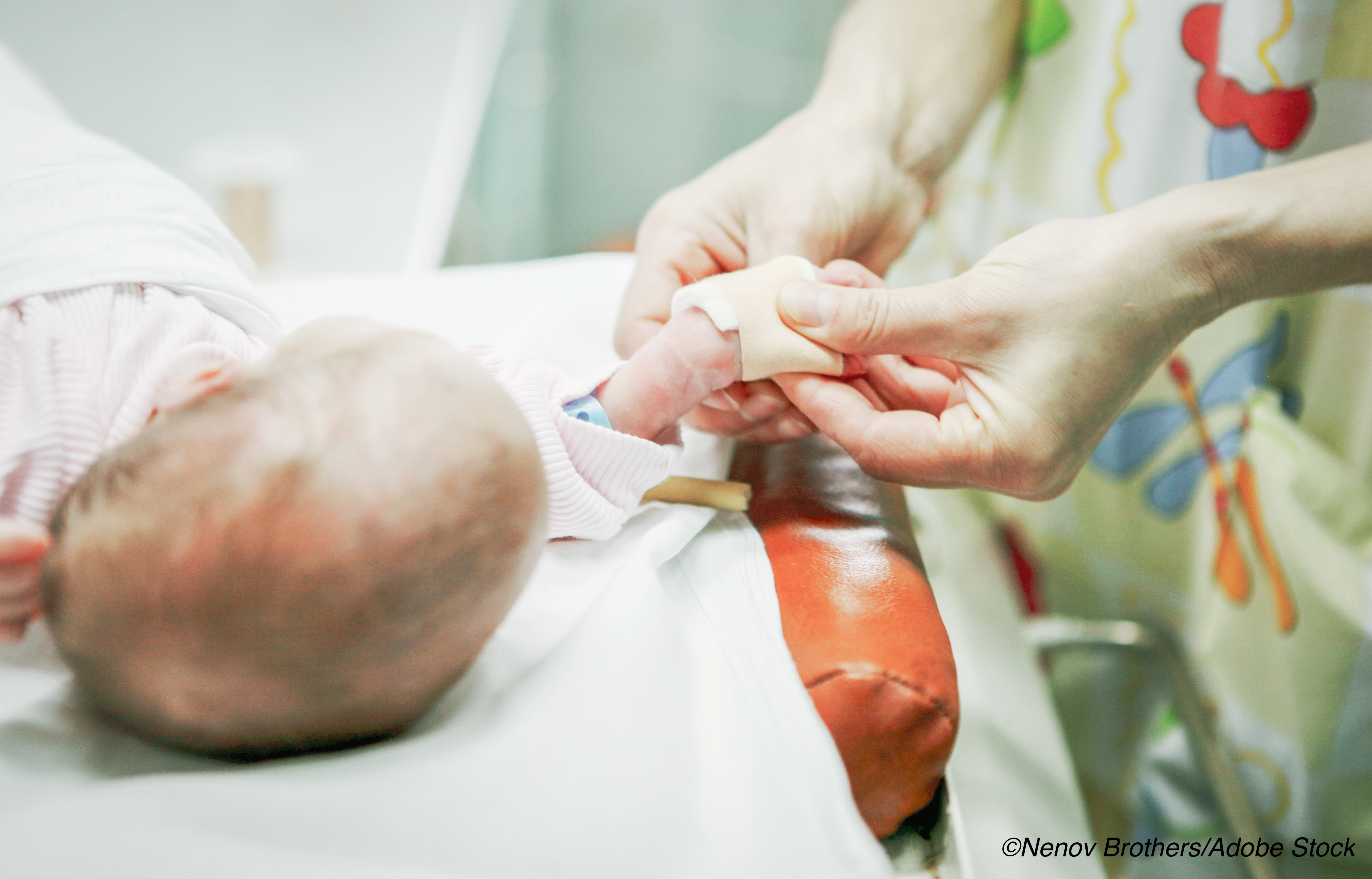Delaying use of surfactant therapy for more than two hours after birth in newborns with respiratory distress syndrome (RDS) increased morbidity, while using surfactant too quickly increased mortality, as did failure to use surfactant therapy at all, according to a population-based cohort study from Sweden that detailed the intricate calculus required for surfactant use.
In the study that included >5,000 infants of varying gestational age, late surfactant treatment (>2 hours after birth) was given to 38.9% of very preterm infants and was tied to higher neonatal morbidity. In addition, off-label use occurred in 18.8% of infants but without any association to better outcome. Finally, “treatment omissions were associated with lower survival,” reported Pontus Challis, MD, of Umeå University in Umeå, and co-authors.
They highlighted several take-home messages from their study in JAMA Network Open:
- One-quarter of surfactant administrations were for full-term or moderately preterm infants.
- One in five infants received surfactant off-label, either for indication or number of administrations.
- Adherence to best practice and administration of surfactant within two hours after birth was associated with lower rates of pneumothorax, intraventricular hemorrhage (IVH) grades 3 to 4, and receipt of postnatal corticosteroids in very preterm survivors.
- Very early surfactant administration peaking approximately 10 minutes after birth was associated with increased mortality.
- Not using surfactant treatment was linked with lower survival in very preterm infants.
However, the authors cautioned that the “observational study design limits the conclusions that can be drawn, and no causality of the described associations can be confirmed.”
Still, the results offer “a strong rationale to use this extensively studied treatment of RDS with surfactant as an early rescue therapy within 2 hours of birth when preterm infants are receiving FIO2 [fraction of inspired oxygen] of 0.30 or greater to improve overall outcomes,” noted Rangasamy Ramanathan, MBBS, MD, DCH, of LAC+USC Medical Center, Keck School of Medicine of the University of California in Los Angeles, in an invited commentary accompanying the study.
The findings need to be taken in the context of previous research, he stated, such as a 2017 study by his group indicating that surfactant therapy can decrease pneumothorax and improve newborn and infant survival, and other studies comparing porcine versus bovine surfactants showing better outcomes with the former.
However, the small number of term infants with meconium aspiration syndrome (MAS) in the current study (6.5% of the full cohort) did not see better outcomes with surfactant treatment, which is out of sync with a larger 2021 trial of neonates with MAS and hypoxemic respiratory failure that demonstrated positive results, Ramanathan pointed out.
Also, Challis’ group had no data on oxygen requirements at postmenstrual age 36 weeks and whether those requirements were tied to surfactant administration. A 2017 study found that a less invasive surfactant administration was linked with less need for invasive mechanical ventilation, he explained.
The authors evaluated registered use, off-label use, and omissions of surfactant treatment by gestational age (GA) and associations with outcomes, primarily in very preterm infants with RDS and a GA <32 weeks. Data came from a Swedish registry that listed 97,377 infants born between 2009 and 2018. All were admitted for neonatal care, but none had malformations. Data analysis was done from June 2019 to June 2020.
The authors reported that 7,980 surfactant administrations were given to 5,209 infants (57.1% boys), most of whom (45%) were born at <28 weeks GA. Almost 30% were 28 to 31 weeks GA, while 13.3% were 32 to 36 weeks’ GA, and 12.1% were born at full term. The most common diagnosis in treated preterm infants was RDS (90%), while the most common diagnosis in treated full-term infants was MAS (53.4%).
Challis and co-authors reported that first administration of surfactant at >2 hours after birth was tied to:
- Higher odds of pneumothorax: adjusted odds ratio 2.59 (95% CI 1.76 to 3.83).
- IVH grades 3 to 4: aOR 1.71 (95% CI 1.23 to 2.39).
- Receipt of postnatal corticosteroids: aOR 1.57 (95% CI 1.22 to 2.03).
- Longer duration of assisted ventilation: aOR 1.34 (95% CI 1.04 to 1.72).
However, those infants also had higher survival (aOR 1.45, 95% CI 1.10 to 1.91) versus infants treated within two hours of birth. Also, 2.8% of the infants got more three surfactant administrations which exceed the maximum recommendation, and did not offer any improved outcome, according to the authors. Omission of surfactant treatment occurred in 5.7% who received mechanical ventilation, and was associated with lower survival (aOR 0.49, 95% CI 0.30 to 0.82).
In full-term infants, 53.4% of those getting surfactant had a diagnosis of MAS, and surfactant delivery was not linked with improved neonatal outcomes. Challis and co-authors agreed with Ramanathan that their MAS findings conflicted with the 2021 trial, but noted that they were in line with 2014 and 2016 systematic reviews.
-
Late surfactant treatment was associated with higher neonatal morbidity, while off-label use was not tied to improved outcome, and treatment omissions were associated with lower survival in a Swedish registry-based study.
-
Adherence to best practices for surfactant use in newborn infants varied, including use of more than three surfactant administrations but without associated improvements in outcome.
Shalmali Pal, Contributing Writer, BreakingMED™
The study was supported by Chiesi Pharma, Region Stockholm /Karolinska Institutet, and the Childhood Foundation of the Swedish Order of Freemasons.
Challis reported no relationships relevant to the contents of this paper to disclose. A co-author reported a relationship with Chiesi Pharma AB.
Ramanathan reported support from Chiesi Farmaceutici.
Cat ID: 138
Topic ID: 85,138,570,730,138,192,195,925




Create Post
Twitter/X Preview
Logout